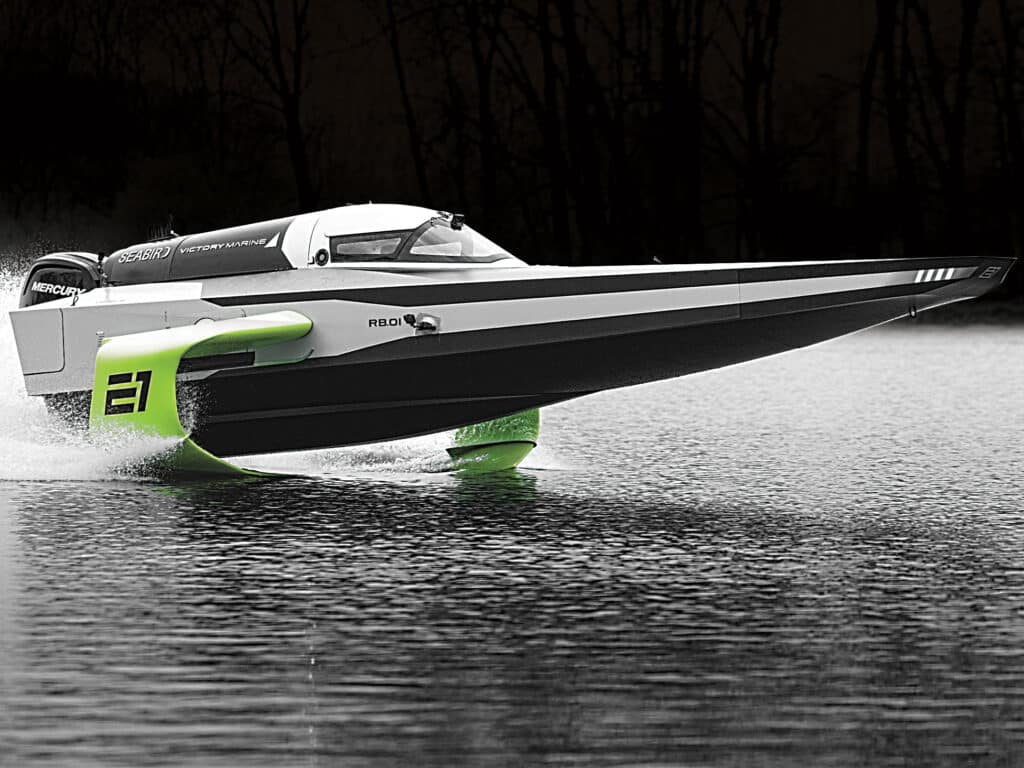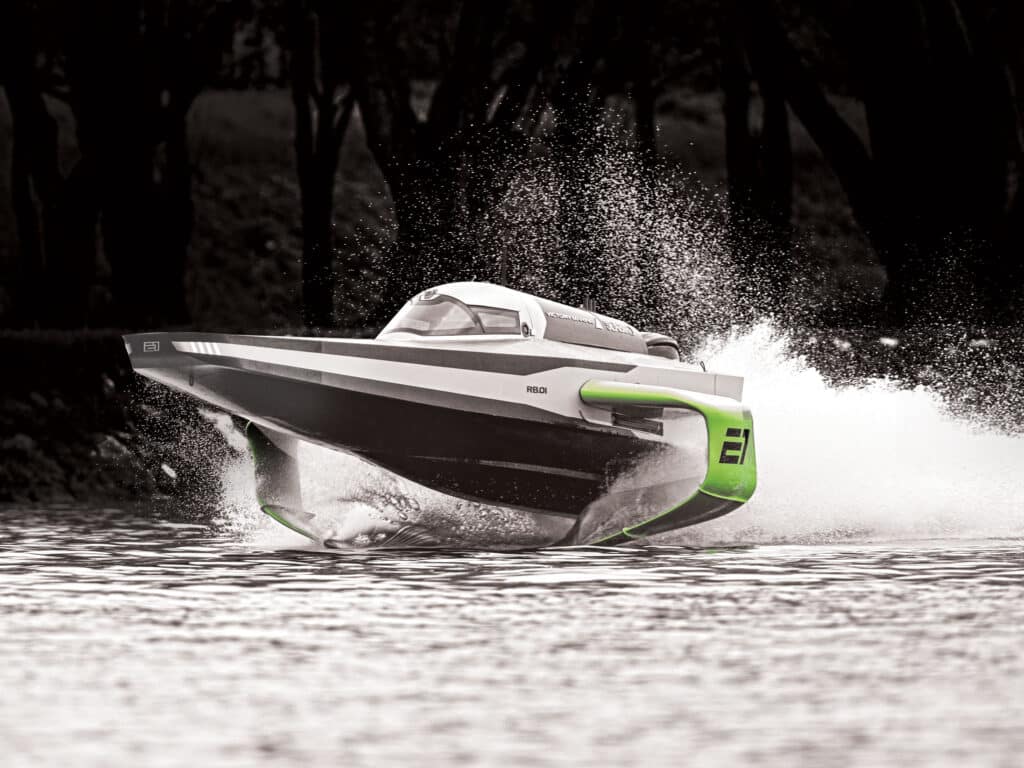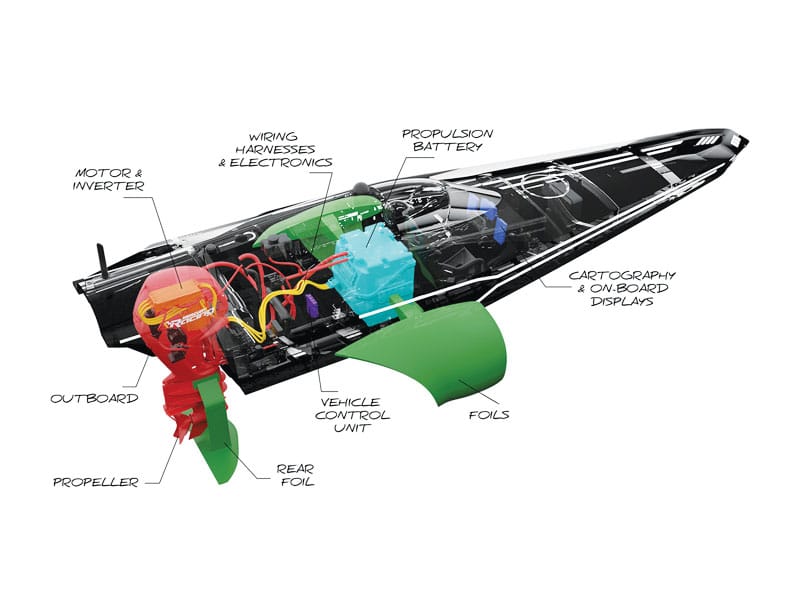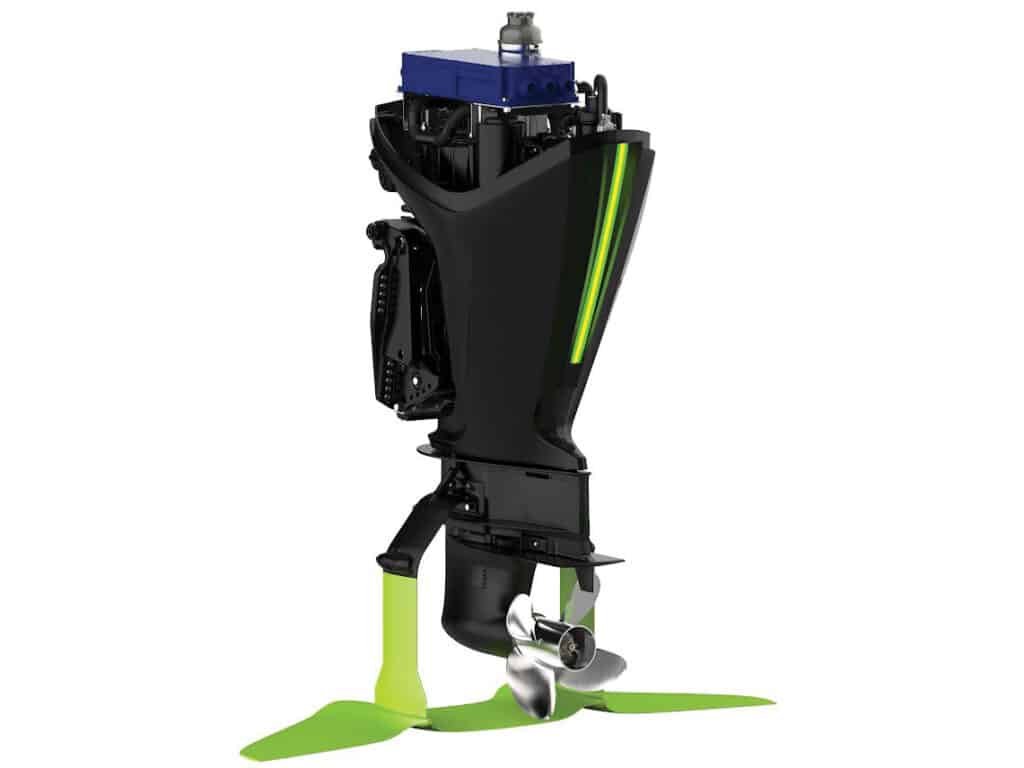
If racing improves the breed, the proposed E1 World Championship, a competition series for foiling boats powered by an electric outboard, might propel development of a practical electric-powered pleasure boat. Pushing technology forward is one reason Mercury Racing says it chose to join the E1 Championship effort as its official Propulsion and Propeller Partner.
The premise of the UIM-sanctioned E1 World Championship is a series of inshore circuit races featuring one-design boats held in glamorous urban venues—think Monaco, Venice, Paris or Manhattan. Testing of the prototype boat and motor have been conducted in Italy, and the race-boat fleet should be constructed this summer, according to E1, with the first race planned for late 2023 at a location to be determined.

Investors commissioned the design, construction and development of the 24-foot all-carbon RaceBird boat to Norwegian designer Sophi Horne, founder of SeaBird Technologies, and to Victory Marine. The boats will be powered by a 520-pound Kreisel 35 kWh lithium-ion battery and a Mercury Racing E1-X outboard with 150 kW (about 200 hp) peak power output. Projected top speed is about 58 mph. Hydrofoils attached to the hullsides and the outboard motor lift the boat high above the water’s surface, allowing for minimal drag and maximum energy efficiency. The main foils will be fixed, but the aft foil will move with the outboard as it’s trimmed and adjusted for height on the transom, giving the pilot control of boat attitude.
The midsection and gear case of a Mercury Marine 2.1-liter outboard serve as the foundation of the E1-X powertrain. The internal combustion powerhead was removed and replaced with the electric motor and an inverter. The electric motor has a peak speed of about 7,000 rpm, only about 1,000 rpm faster than a 2.1-liter internal-combustion engine. The Mercury Racing team selected the 2.07-to-1 gear ratio for the project. The DC-to-AC inverter (the blue box seen in the photos) is positioned on top of the electric motor. The combination of motor and invertor requires less space than the 2.1-liter powerhead.

Three components of the powertrain require cooling: the electric motor, the inverter, and the 35 kWh battery located within the boat. This requires two separate closed-cooling systems and seawater heat exchangers. Mercury Racing devised a seawater pickup port located in each strut of the hydrofoil that is attached to the E1-X motor. Rather than create all-new parts for the cooling system, Mercury Racing engineers looked to existing Mercury components for solutions. The transmission cooler for a Mercury Verado V-12 outboard serves as the heat exchanger for cooling the motor and invertor. The pressure sensors, temperature sensors, coolant reservoir and other components for the cooling systems are from Mercury Racing QC4 sterndrive engines.

“We were able to develop the E1-X prototype quickly with parts that are on hand and already validated,” says Jeff Broman, Mercury Racing’s director of engineering. “When the final E1-X design is established and we move to regular production, some of these components may be replaced with newly designed parts optimized for size or weight.”
Read Next: Electric Boats and Avoiding Range Anxiety

Rigging a foil to the outboard was a new challenge for Mercury Racing. Broman says his team was supplied with a CAD file and had to create a prototype foil in billet aluminum. The production foil can be composite. Mercury Racing had to devise a way to secure the foil, which can generate 500 pounds of lifting force, to the motor’s midsection, and also to accommodate the boat’s changing elevation as its speed increases or decreases. Two 5-inch spacers in the midsection give the E1-X a length of 30 inches, which keeps the prop in the water as the boat lifts on the foils. The motor is also rigged with a hydraulic jack plate with 6 inches of up-and-down range, which allows further fine-tuning of the engine’s height.
Broman reports that RaceBird and E1-X testing is ongoing and has been successful so far, focusing mostly on optimizing the hydrofoil system. An E1 Championship boat is expected to make demo runs at the Mercury Racing Midwest Challenge in Sheboygan, Wisconsin, on August 12.









